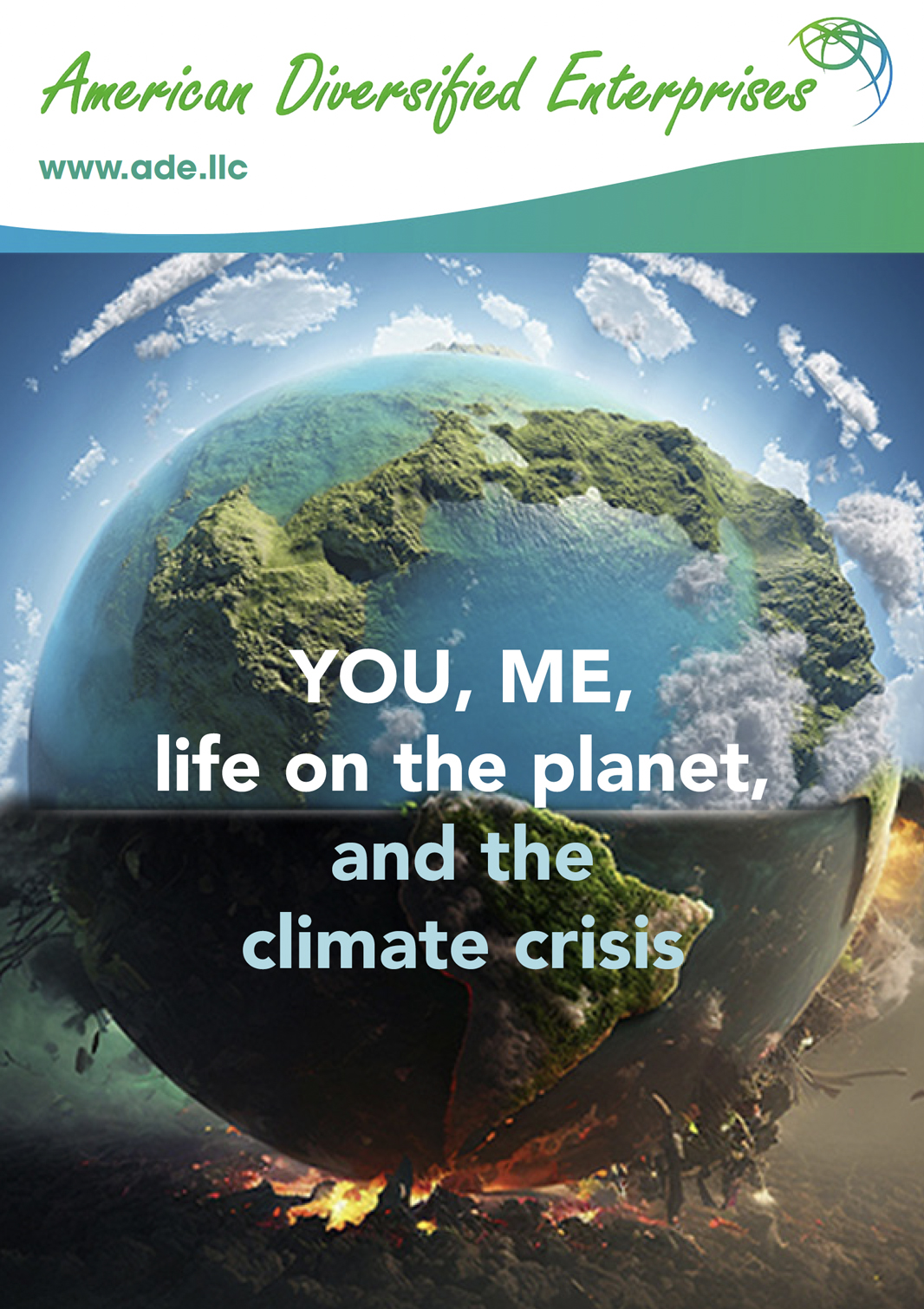American Diversified Enterprises’ eBook illuminates why there is still hope in combatting the growing threat of the climate crisis globally.
American Diversified Enterprises (ADE) facilitates the connection between governments with serious mandates and innovators who have groundbreaking solutions to environmental challenges.
The climate crisis is accelerating at a rapid rate. Climbing temperatures are causing ever-increasing natural disasters and weather extremes, impacting livelihoods on a global scale. We cannot continue without any substantial change. Hope is not lost, however; there is still time to act to defeat this global threat.
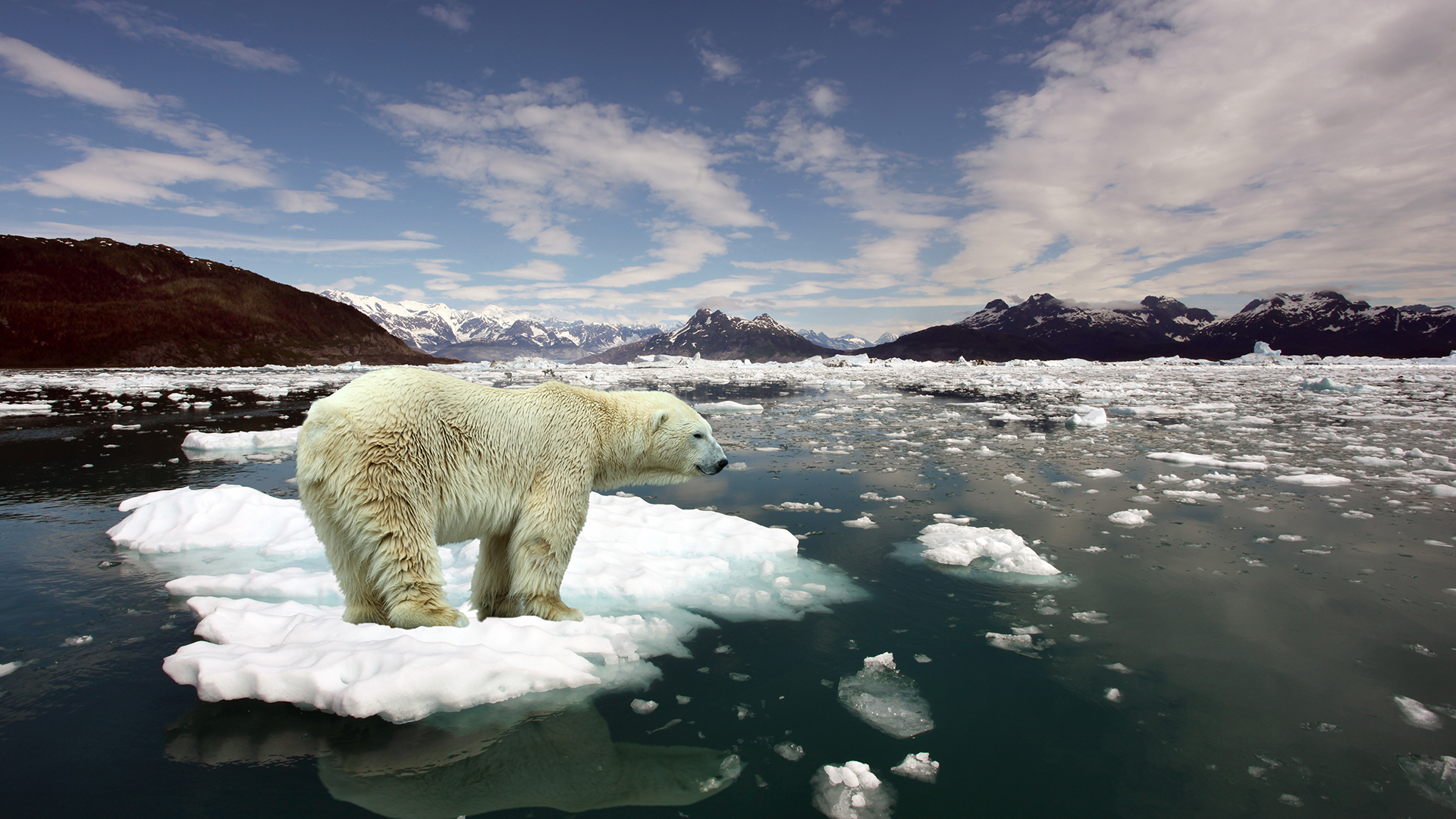
Written by CJ Evans, Managing Director of American Diversified Enterprises, this eBook emphasises the importance of having hope in light of the climate crisis. Worldwide, many people are working on developing, deploying, and expanding the use of innovations that will address the climate crisis and moderate its impacts. Already, every technology that can mitigate the climate crisis and avert its worst impacts is under development or has been commercialised.
Despite this, it often feels like the fight against the climate crisis is futile, as we are constantly bombarded with news about its worsening effects. This is because creating new technologies which can mitigate these negative impacts relies on money from investors willing to take significant risks. Oftentimes it can take eight to ten years for an innovation to advance to the point where it can qualify for a bank loan or government loan guarantee, only after which it can be commercialised and deployed.
Hope should not be lost. American Diversified Enterprises helps those with game-changing ideas advance by being an enabler, and initiates and pursues new high-impact ideas by being an innovator. It helps businesses to secure project support throughout the entirety of an operation, with expertise in project development and design, application preparation, project financing, partnership forging, and project execution.
This eBook outlines the role of American Diversified Enterprises in reducing the impacts of the climate crisis. It aims to instil hope that we can still fight back against the climate crisis together, and importantly, as individuals. Working together, the challenges of the climate crisis can be met – and American Diversified Enterprises will help at each step of the way.

There are three common reactions to the increased media coverage about the climate crisis and the reports of lives being impacted and lost due to its ever-increasing and devastating impacts.
These three reactions are fear, anxiety, and denial. All three are understandable.
Denial is especially understandable. It is defined by the Psychology Dictionary as: “[an] unconscious defence mechanism of denying the existence of painful facts [which] enables an individual to escape from intolerable thoughts, wishes, actions, or events and the anxiety which they produce. In denying their existence he [or she] is not lying or malingering, nor does he [or she] deliberately repudiate the ideas or consciously dismiss them from mind. He [or she] simply fails to perceive that they exist.”
Moreover, the more uncomfortable a person feels, the more his or her denial intensifies.
There is much that is uncomfortable and frightening about the climate crisis that already is happening at a faster and faster pace. This conflicts with everything all of us have known and experienced.
Since the past is what we know, the past is what we use as the basis of our worldviews and to gauge the future.
These feelings are only exacerbated by the news media’s focus on ratings and profits which has fuelled – and are continually validated by – a 24/7 headline-grabbing, bad-news-is-happening, if-it-bleeds-it-leads obsession.
Good news is harder to find, since it often is provided as a token, a nod to decency, on a back page, or as a two- or three-minute footnote at the end of a news broadcast.
It is enough to drive one into denial.
These feelings are further complicated by the fact that, with few exceptions, we think in a linear fashion, while the climate crisis is unfolding exponentially.
Some of us understand, intellectually, what an exponential progression is, why it matters, and how to spot it. Some, that is, but not many of us, not by a long shot.
Moreover, changing our own behaviours – and much more challenging, changing the behaviours of others – to switch from thinking about things in a linear fashion to taking action when something is compounding exponentially, is exceedingly difficult.
It simply is not in our DNA. And therein lies the problem.
To address the climate crisis, we – meaning you, me, corporations, governments (in particular), pastors, homeowners, and neighbourhood associations, in short, everyone – need to feel the urgency of the climate crisis and the urgency to act.
But how?
American Diversified Enterprises (ADE) has written a parable that attempts to explain this dilemma. It is based on a brainteaser, often used by math and science teachers to explain exponentiality, which has been told in various ways over the years.
ADE’s parable is an amplification of these stories. It is about a lily pad, a pond, and a group of neighbours living around the pond and how they react after, one day, they see something different about their pond.
Their reactions are likely to be familiar, since they react in the same way that most of us would react and how our corporations, governments, and, far too many of our friends and neighbours, are reacting to the climate crisis.
The wake-up call comes at the end of the parable. Understanding this is a matter of survival.
A lily pad, a pond, and the 29th day
Understanding the exponential progression of the climate crisis
Imagine a pond, encircled by a soft, leaf-cushioned trail, shaded under a woodland canopy, through which patterns of sun-dappled light chase shadows across the ground, keeping tempo with a chorus of birdsongs, as the fragrances of damp moss, musky leaves, and honeysuckle rise up on a breeze that ripples across the pond’s surface, throwing sunny sparkles into the sky.

Imagine neighbours, living around the pond, on daily walks along the trail, with their dogs chasing sticks and shaking sprays of water after a swim, and the neighbours greeting each other, stopping every so often to comment on the weather, ask after family members, and talk about the upcoming homeowners’ meeting.

Imagine as well that, one day, during their walks the neighbours notice a lily pad, just one, tucked close to the fringe of cattails encircling the pond, a new occurrence that catches the attention of several neighbours.
This species of lily pad reproduces once a day, so on day two the neighbours notice that there are two lily pads. On day three, there are four, and so on.
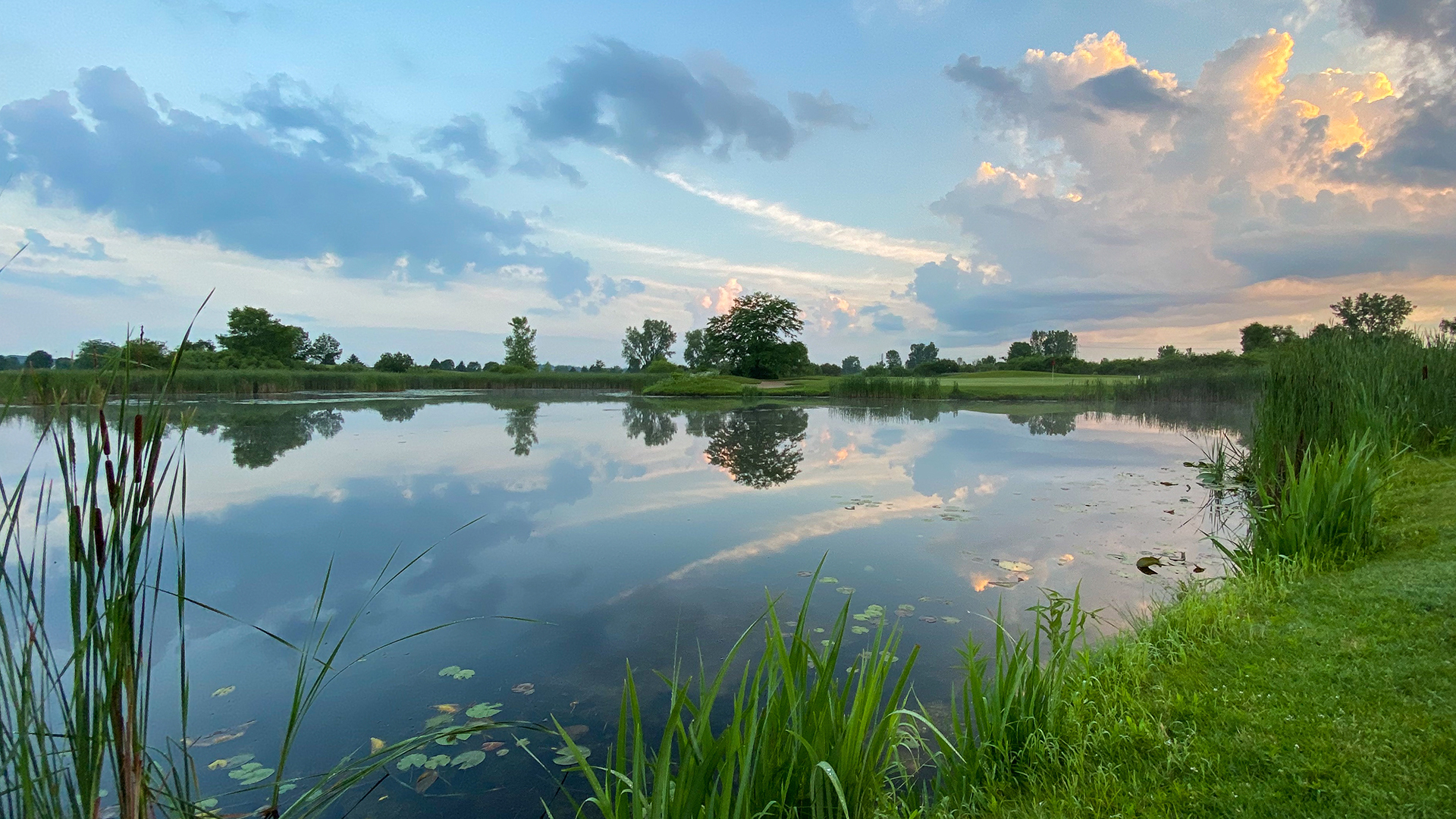
This continues for the next ten days. It is only then, with the lily pads becoming more noticeable, do the neighbours begin to wonder if something has changed, maybe because they are applying too many chemicals to their yards to promote springtime plant health and growth. Several neighbours suggest that, “maybe we should have someone take a look at this,” and that the pond water should be tested.
Other neighbours, particularly the family that owns the local nursery which sells the fertilisers, insecticides, and pesticides used by the neighbours, counters that, “no, this is nothing unusual, particularly not in spring, it is simply the result of some weather changes that are completely normal.” They assure everyone this is just a phase, that will pass, with everything returning to normal, perhaps as soon as summer.
The next day, there are more lily pads. Then, even more, the next. On the 15th day, one of the neighbours, a high school math teacher, has his students count the lily pads. There are 3,100. He realises that the progression from one lily pad to 3,100 in 15 days is an exponential increase.

He tries to warn his neighbours. On days 16, 17, and 18 there are more and more lily pads, but to most neighbours, nothing of concern. After all, on day 16 only 0.0063% of the pond has a fringe of lily pads. This increases to 0.025% on day 18, which for most is barely noticeable.
Thus, the math teacher is ignored, and his neighbours begin suggesting among themselves, shaking their heads, that the math teacher has become much too obsessed with lily pads.
On the 19th day, upon seeing another daily increase, the neighbours decide that, yes, there very likely is a logical explanation for this, whatever it might be, but they should nevertheless call someone, say, the owner of the nursery, who has a bachelor’s degree in chemistry, to come up a solution. This, they nod, he is fully capable of doing. “Easy,” they say, “nothing to worry about,” they agree.

Photo by Kyle Spradley | © 2014 – Curators of the University of Missouri
The neighbours are so convinced this will work, with all the latest advances in technology, biology, and chemistry, that they put the thought of lily pads out of their minds for a few more days, talking about anything and everything during their walks, except lily pads.
Two days later, the nursery owner admits that he is stumped. He has tested several samples to no avail; anything that kills the lily pads will kill everything in the pond. He did notice one thing, however: growth stopped after he left the shed where he did the tests, and the lights were off. This gave him an idea: why not hire a plane to spray sulfur dioxide aerosols – that is, he tells his neighbours, light-reflecting airborne particles – over the pond to slow the growth of the lily pads. This, he explains, is called ‘geoengineering.’
Once the neighbours learn there is an “unintended consequence,” they balk. “Diminish our sunlight?” No way, they say.
It is now the 21st day. One-tenth of 1% of the pond is covered with lily pads. The neighbours agree there is an increase, but it is hardly noticeable, so there is plenty of time to find a solution.
On the 24th day, 1.56% of the pond is covered with lily pads. The neighbours decide to add the issue to the upcoming homeowners’ meeting, as a final agenda item. They debate about what to call it: “Concern Over the Pond” is too strong for some neighbours. “That makes it sound like it’s an emergency,” they complain. They suggest calling it a “Conversation On the Pond” so the two suggestions will share the same initials. Both groups are satisfied. They will call it COP (which, few realise, are the initials for every global climate change conference since 1995).
On the 28th day, one-quarter of the pond is covered with lily pads. Something needs to be done, they tell each other, certainly before the pond is fully covered.
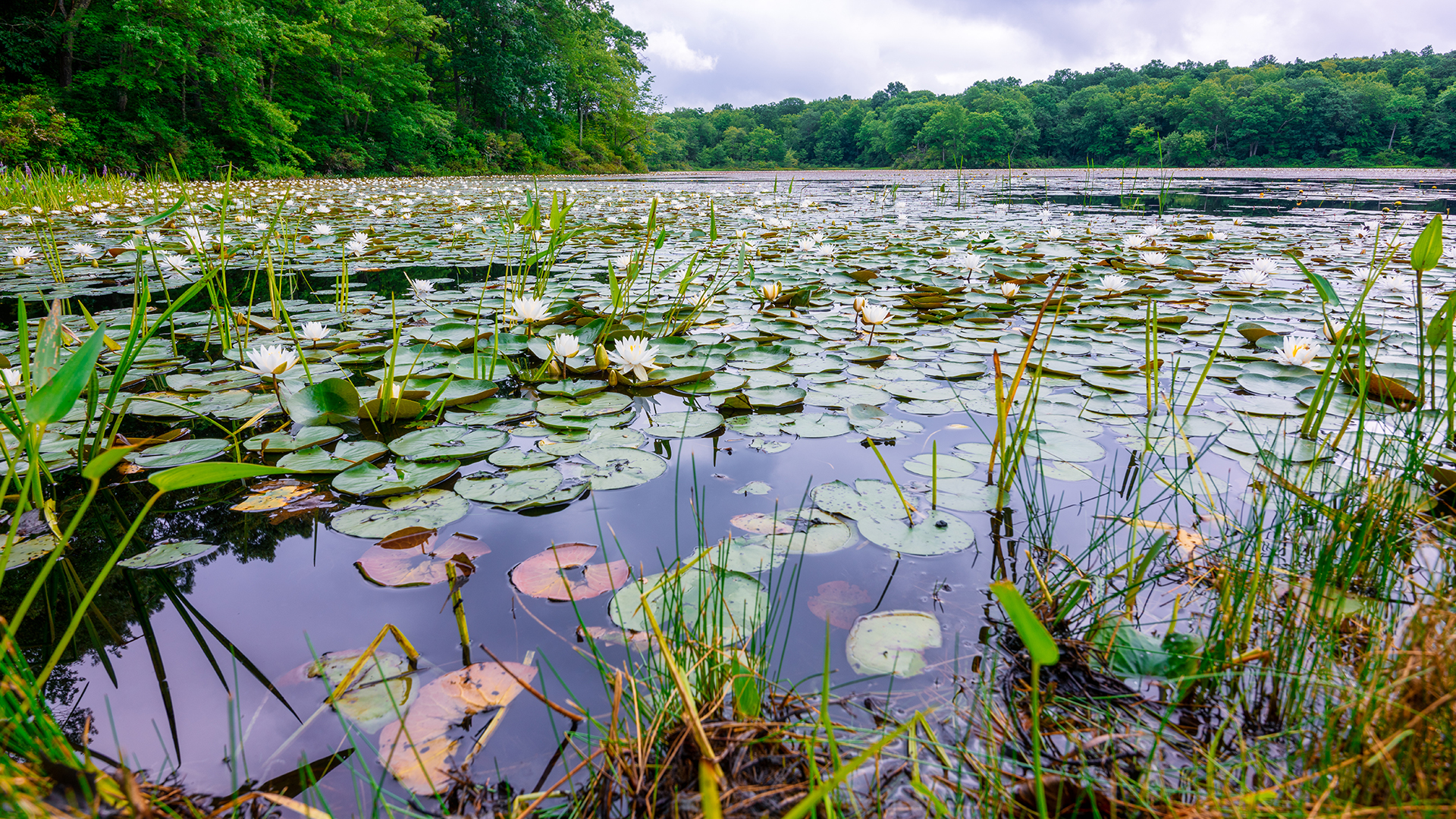
Their concern has increased, since they have learned that, should the lily pads cover the pond, the lack of sunlight and decomposing lily pads could choke the pond, turning it into lifeless, smelly bog, which would decrease their home values.
“When do you think that will happen?” they ask each other. Thinking back over the history of how the lily pads had spread, the consensus is “probably another 28 days.”
“Plenty of time” they agree.
The next day, the 29th day, the neighbours are surprised to find half of the pond covered with lily pads. “Maybe this is a little more serious than we thought,” more are saying.
The homeowners meeting is several days away. “Shall we move it up, call an emergency session?” several ask. “I’m sure we still have a lot of time, but it won’t hurt,” the others agree. The homeowner’s meeting is scheduled for the next evening.
On the morning of the 30th day, the pond is fully covered with lily pads.
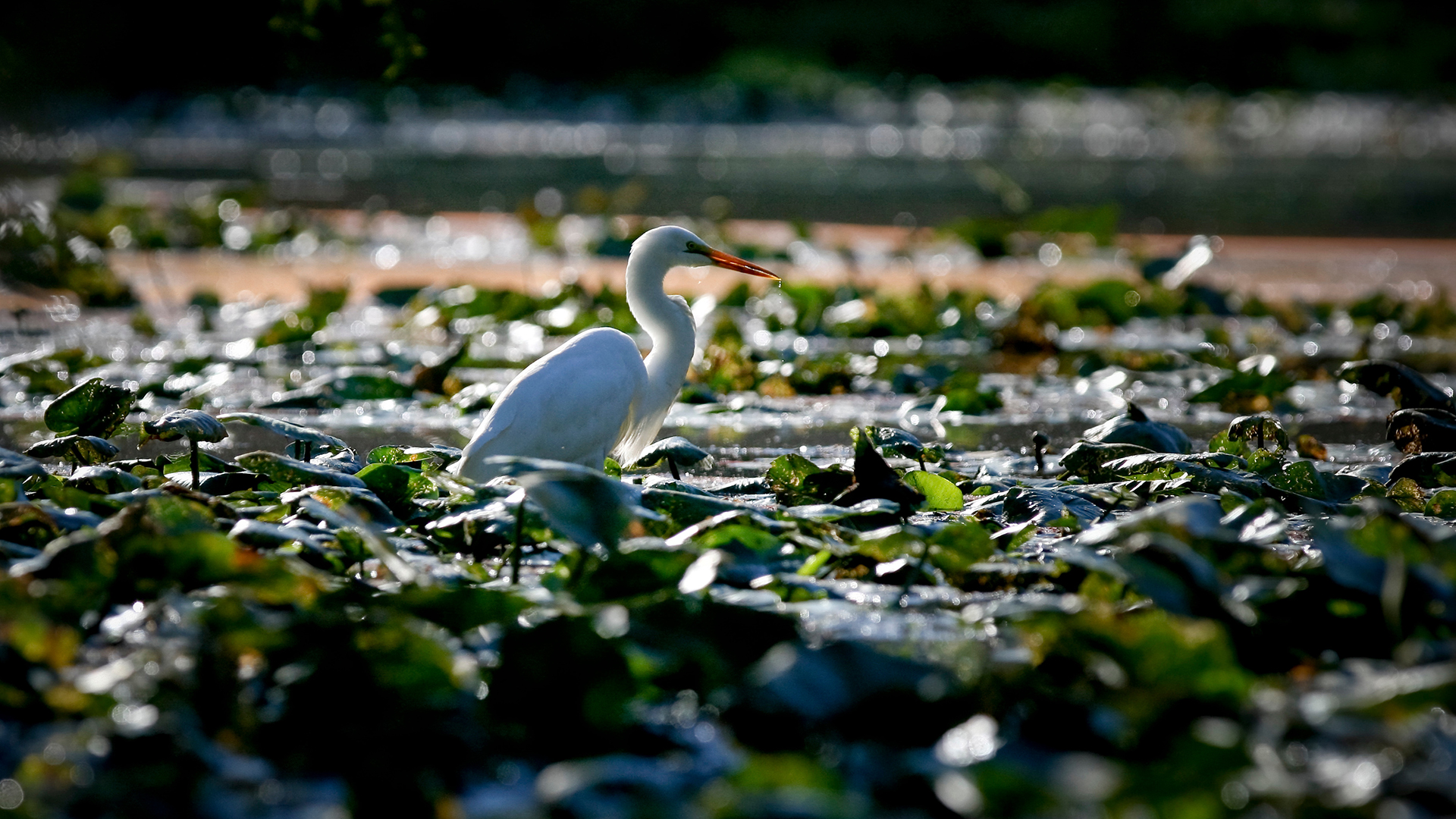
The bottom line, told in the parable above, is the world’s climate is changing much more rapidly than most people realise. For those who are beginning to realise this, the reaction most likely is fear, anxiety, or denial.
What is missing in the discussion about the climate crisis, and what few of us ever hear, is hope
Hope that, yes, there are many people around the globe diligently working on developing, deploying, and expanding the use of innovations that will address the climate crisis and moderate its impacts.
Hope is the subject of this eBook

